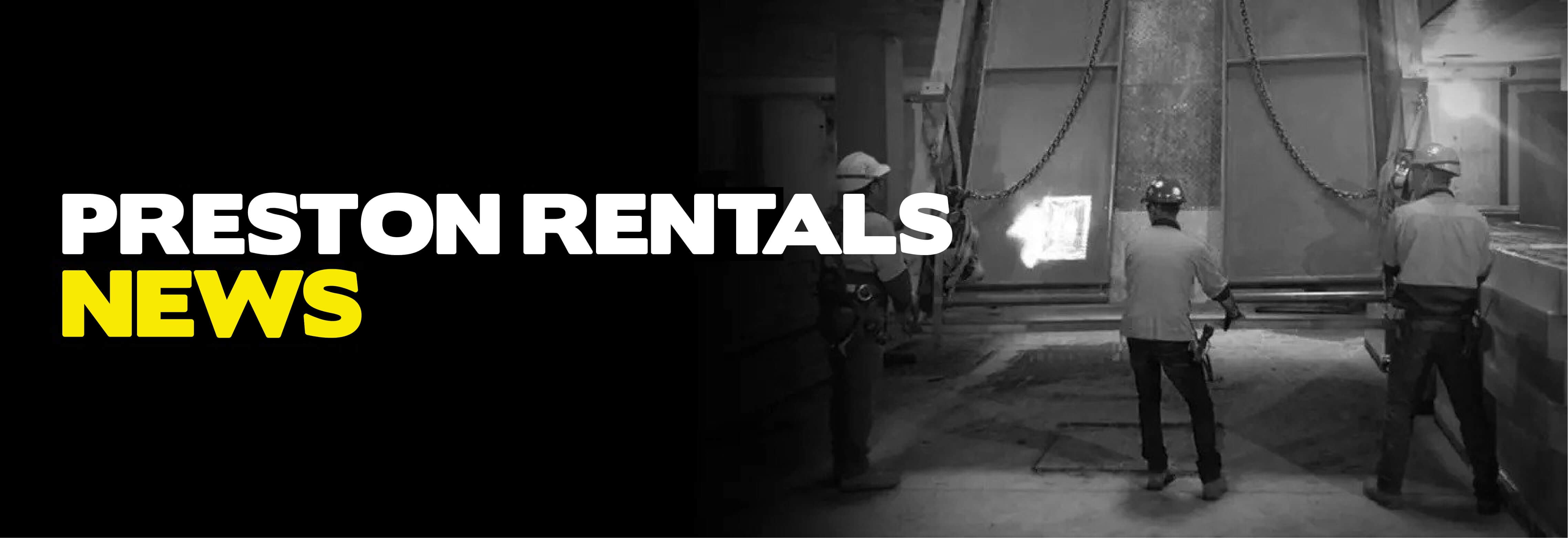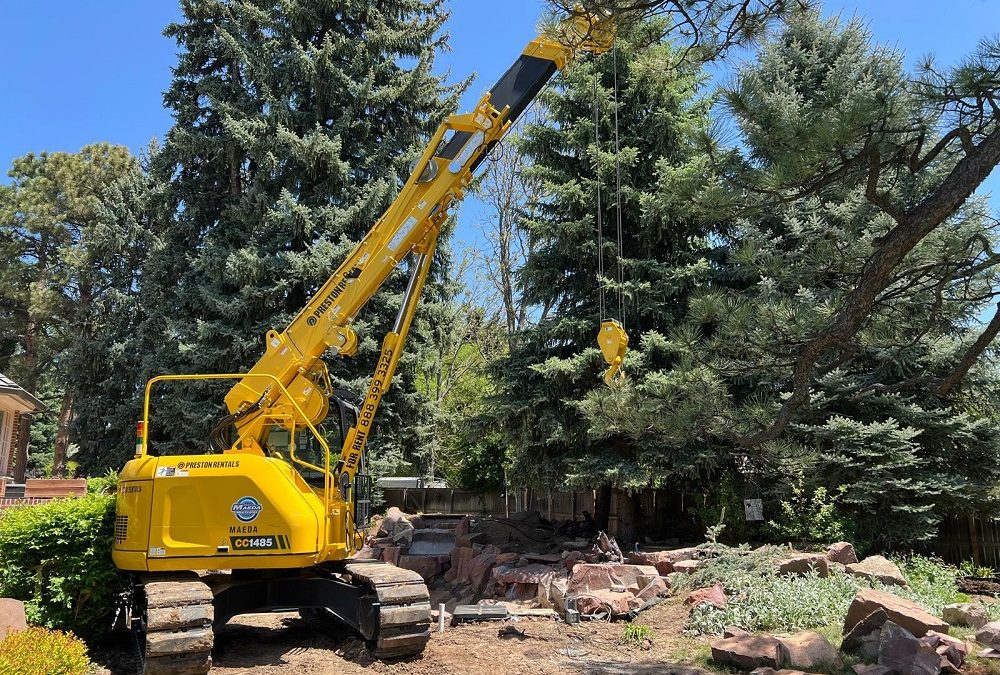How to Choose the Right Crane Rental Equipment for Your Project: Key Factors to Consider
So, you know you need a crane rental for your construction project – but there are so many on the market! How can you tell which of these machines will ensure a smooth project execution?
Renting the right crane for your project is essential for avoiding unexpected expenses, safety risks, and even project disruptions. With multiple options available, from mobile cranes to tower cranes, it’s easy to feel overwhelmed.
In this guide, you’ll discover the key factors to consider when choosing crane rental equipment service, including capacity, terrain suitability, rental terms, and budget planning. By the end, you’ll have a clear roadmap to selecting the perfect crane for your job – without second-guessing your decision.
Assess Your Project Needs
Before choosing crane rental equipment, you need a clear understanding of your project’s requirements. Here are the three key factors to evaluate:
1. Load Capacity and Weight Considerations
The first step is determining how much weight your crane needs to lift. Overloading a crane can cause mechanical failure and compromise site safety. Consider:
- The heaviest load your project will require lifting.
- Whether you need to move materials horizontally, vertically, or both.
- Future weight requirements if your project scales up.
2. Job Site Conditions and Terrain
Not all cranes are suited for every type of job site! Ask yourself:
- Is the terrain rough, uneven, or muddy? You may need an all-terrain or crawler crane.
- Are there space limitations? Compact spaces may require a mini crane or a mobile crane with a smaller footprint.
- Are there obstacles like power lines or buildings? Clearance issues may require a crane with specific boom configurations.
3. Height and Reach Requirements
Crane height and reach are just as important as weight capacity. Consider:
- The maximum lifting height needed for your materials.
- If the crane is working near structures that could limit movement.
- The radius required to move loads efficiently across the site.
By carefully assessing these factors, you’ll be in a strong position to select the right crane rental option for your project.
Understand the Different Crane Types
Cranes are manufactured to overcome different challenges. Choosing the right one depends on your project’s specific needs, like terrain, load capacity, and space constraints. Below are the most common types of cranes and when to use them.
1. Mobile Cranes: The Versatile Choice
Best for: General construction, short-term projects, and sites with limited space.
Mobile cranes are mounted on wheels or tracks, making them highly flexible for different job sites. They are ideal for lifting heavy loads in areas where a stationary crane isn’t practical.
Key advantages include:
- Quick setup and relocation
- Suitable for urban and confined spaces
- Available in different sizes and lifting capacities
2. Tower Cranes: The High-Rise Workhorses
Best for: Large-scale construction, high-rise buildings, and long-term projects.
Tower cranes are commonly used for skyscrapers and bridge construction due to their height and lifting capacity.
Key advantages include:
- Exceptional height and reach
- Heavy lifting capabilities
- Fixed position for stability on large sites
(Note they require a longer setup time and are not suitable for projects that demand mobility)
3. Mini Cranes: Compact Yet Powerful
Best for: Tight spaces, indoor projects, and delicate lifts.
Mini cranes, are compact yet powerful machines designed for projects with space restrictions.
Key advantages include:
- Fits into tight areas and through doorways
- Lightweight design for delicate surfaces
- Remote-control operation for precision lifting
4. Crawler Cranes: Built for Tough Terrain
Best for: Rough, uneven ground and heavy-duty lifting.
Equipped with tracks instead of wheels, crawler cranes provide stability on challenging terrains.
Key advantages include:
- No need for outriggers, making them more stable
- Can lift extremely heavy loads
- Operates on mud, sand, and uneven surfaces
Key Rental Considerations
Once you’ve determined the right crane rental equipment, it’s time to consider the practicalities of the rental process. Understanding rental terms, additional services, and safety requirements can help you avoid unexpected issues.
1. Rental Duration and Contract Terms
Before signing a contract, consider:
- How long will you need the crane? Renting for too short a period may cause delays, while overestimating can increase costs.
- What’s included in the contract? Check for maintenance, insurance, and operator requirements.
- What happens if your project timeline changes? Ask about flexibility and extension options.
2. Safety and Compliance Regulations
Crane safety is non-negotiable. Before leasing a crane, make sure your rental provider adheres to OSHA (Occupational Safety and Health Administration) standards and other local safety regulations. Ask about:
- Regular maintenance checks on the crane.
- Load capacity limits and safety features.
- Insurance coverage in case of unexpected incidents.
3. Additional Services: Do You Need an Operator?
Some rental companies provide a qualified operator with their crane lift services. If your team lacks certified crane operators, this can be a safer and more efficient option. Consider:
- Hiring an experienced operator to reduce the risk of accidents.
- Avoiding training costs if your team isn’t certified to operate cranes.
- Ensuring compliance with safety and legal regulations.
Cost and Budget Planning
Renting a crane is a significant investment, and understanding the cost factors can help you plan your budget effectively. The last thing you want is unexpected expenses that could impact your project’s bottom line. Here’s what to consider when budgeting for a crane rental.
1. Understanding Pricing Structures
Crane rental costs vary based on several factors, including:
- Type of crane: Larger, more specialized cranes cost more to rent.
- Rental duration: Short-term rentals may have a higher daily rate, while long-term leases offer better value.
- Additional services: Hiring an operator or using crane lift services will add to the overall cost.
2. Avoiding Hidden Fees
Before signing a rental contract, ask about potential hidden fees that can increase your costs, such as:
- Delivery and setup fees for transporting and assembling the crane.
- Overtime charges if your project runs longer than expected.
- Damage or maintenance fees if the crane isn’t returned in its original condition.
3. Getting the Best Value for Your Rental
To maximize your budget, follow these cost-saving tips:
- Compare quotes from multiple providers to find the best deal.
- Rent only what you need—don’t overpay for a crane that exceeds your project’s requirements.
- Plan ahead to avoid last-minute rentals, which can be more expensive.
By carefully managing your crane rental costs, you can keep your project within budget while ensuring efficiency and safety.
A Final Word About Choosing the Right Crane to Rent
Choosing the right crane rental equipment is critical to ensuring a smooth, efficient, and cost-effective project. By assessing your project needs, understanding different crane types, considering rental terms, and planning your budget, you can make an informed decision that keeps your project on track.
At Preston Rentals, we offer a wide range of crane rental options, including heavy crane services and crane lift services, tailored to meet your specific requirements. Whether you need a mobile crane for flexibility, a tower crane for height, or a mini crane for tight spaces, our team is here to help you select the best equipment for the job.
Need expert advice on your next crane rental? Talk to the team at Preston Rentals today and let us help you lift your project to new heights!


